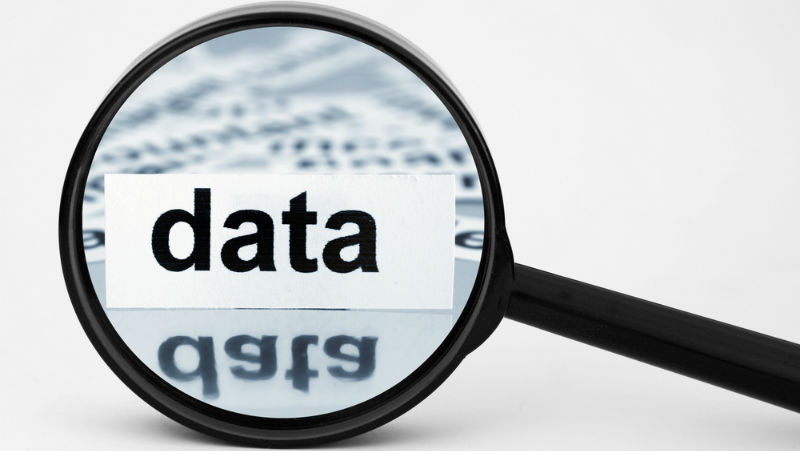Using data to provide a more personalized customer experience
In the wake of GDPR the way businesses collect data from customers has changed significantly

Before the introduction of the EU’s General Data Protection Regulation (GDPR), businesses collected as much data as they could from customers and even purchased additional data from third parties. However, with GDPR in effect and the possibility of being fined for mishandling data, businesses needed to approach data collection in a much more ethical way.
To better understand how businesses are now using data to offer a more personalized customer experience, TechRadar Pro spoke with Maintel’s CTO Rufus Grig.
- The importance of putting your data to work
- Security teams are drowning in data
- A new era in data awareness
What kind of data do businesses typically collect when customers visit their websites or download their apps?
In reality GDPR had a massive impact on the data companies collect. Previously, many businesses would attempt to collect anything and everything – whether that’s data they’ve collected themselves or data they’ve purchased from third parties.
Since the implementation of GDPR, businesses are much more circumspect and cautious about the data they collect. Companies simply can't buy and correlate data from other sources the way they used to be able to.
Now, we’re seeing a strong drive for companies to make the data they collect a key asset, but with one major difference from previous years – the data people opt-in to provide. However, the level and type of information customers are willing to provide depends on the business they are dealing with. For example, people may be willing to provide details of their job role, spending power and key interests if they’re visiting a website in a business capacity. However, if they’re simply looking to purchase a new pair of trainers they’re unlikely to be happy to provide granular detail. So, the data companies are collecting depends on the type of business and the types of relationships they have with their customers.

How are companies using this data to provide customers with a more personalized experience? Does a more personalized customer experience lead to greater consumer engagement and how do both sides benefit from this arrangement?
Using data to deliver a personalised experience will be a big focus for businesses going forward. However, the key to utilsing this approach effectively is to make sure your use of data creates a win-win situation for the business and the consumer.
For example, companies can use the information they have gathered to offer specific products they know a customer could be interested in, as well as tailor-made offers or loyalty bonuses. However, businesses can’t appear to be spamming a customer – just because they purchased a kettle once, they won’t want to be seeing offers for kettles every week. Businesses must make offers more targeted, built on a genuine understanding of the customer.
Another way in which businesses can personalise a customers’ experience is by tailoring the content they see on a website. For example, in the B2B world, if you know your customer is a finance director, you can push content towards them which would be more focused for their interests i.e. discussions around the bottom line or cost. This rids the need for the finance director to search around the website for the information they need and allows the company to grab their attention from the moment they visit the website.
In essence, we will see companies increasingly use a variety of tactics to create a personalised experience to boost sales, but this approach must give something to the customer, whether that’s special discounts, an improved experience, or hand-picked content.
Where do consumers draw the line when it comes to how much data they are willing to hand over for an improved customer experience?
The amount of data people are willing to hand over has changed dramatically in the wake of the Cambridge Analytica scandal and other instances of data misuse hitting the headlines. There has been a breakdown in trust.
Therefore, companies will have to go for an opt-in approach and allow people to draw the line where they feel most comfortable. This line will vary depending on the type of business people are providing data to – the sector they operate in, the services they offer, their experience and, most importantly, the level of trust people have for the business. For example, people are much more likely to give more detailed, personal information to a healthcare provider than a streaming service.

How can businesses collect and store data in an ethical way? How can businesses ensure that they keep their customer data secure?
Companies must have a protocol in place for the safe handling and storing of data, and the correct procedures need to be explained to every single member of staff. After all, a lot of data abuse stems from internal issues.
Companies must also bear in mind that they should only collect what information they need, they need to store it securely and they should implement data leakage protection. What’s more, strong access control to ensure each staff member can only access the information they need to see to fulfill their job.
My main piece of advice would be to put yourselves in the shoes of your customer. What information would you be happy sharing and how would you expect them to use it and store it?
What advice would you give to businesses trying to collect data from their customers in a more ethical way?
Companies should undertake a trust building exercise, ensuring customers their data is being secured and used in an appropriate way. We will see more and more companies explaining why they need certain data, how they intend to use it, how the customer could benefit and, of course, how all this information will be stored securely. If somebody understands why they are being asked certain questions and how this data will be used, they are much more likely to trust a business.
- We've also highlighted the best data visualization tools
Are you a pro? Subscribe to our newsletter
Sign up to the TechRadar Pro newsletter to get all the top news, opinion, features and guidance your business needs to succeed!